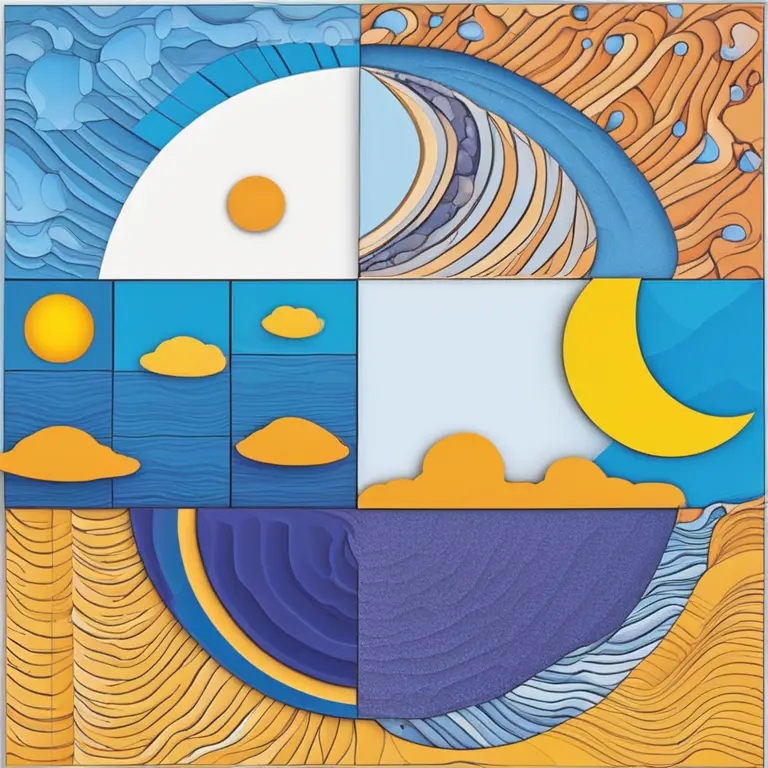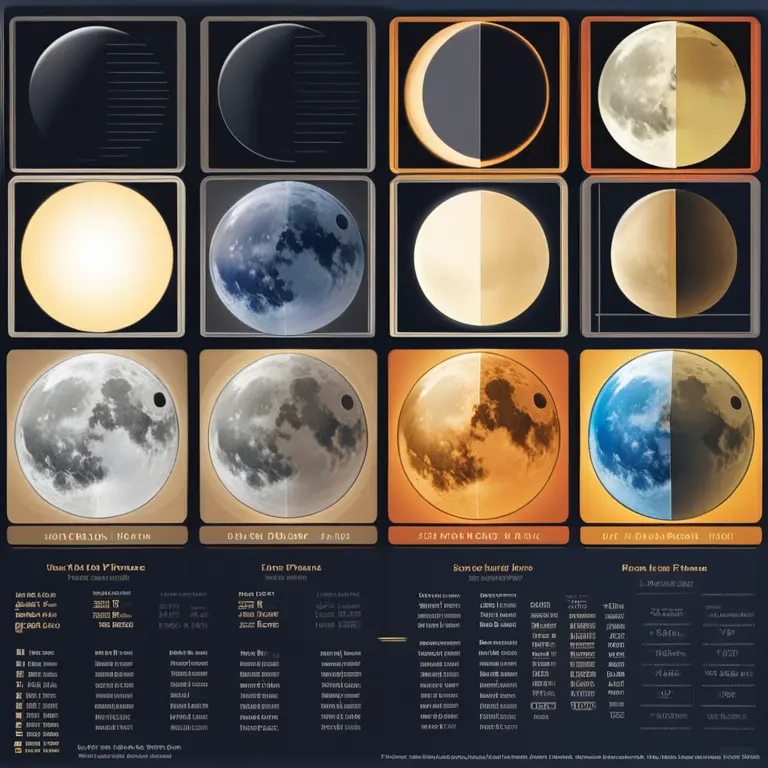
Moon Phases and Tide Levels: Which Brings the Lowest Tide?
Delve into the relationship between lunar phases and tidal variations to discover which moon phase is linked to the lowest tides on Earth.
article by Priya Deshmukh
Introduction to Lunar Tides
Tides are the rise and fall of sea levels caused by the gravitational forces exerted by the Moon and the Sun and the rotation of the Earth. In coastal regions around the world, the ebb and flow of the tides are witnessed daily, but what governs their magnitude? The moon, being our closest celestial neighbor, plays the pivotal role in this intricate dance of the tides. The phase of the moon is a key player in determining the tide's strength and as we shall see, certain phases are characterized by notably lower sea levels known as low tides.

Understanding Moon Phases
The lunar cycle, taking roughly 29.5 days to complete, encompasses a series of phases. These are the new moon, crescent, first quarter, gibbous, full moon, disseminating, last quarter, and balsamic phases. Each phase reflects a different portion of the moon lit by the sun, and the variation in brightness seen from Earth influences not only astrology and spiritual activities but also the tides.

Low Tides and the Lunar Cycle
Low tides, or neap tides, are typically less extreme compared to high tides and occur when the gravitational pull of the moon and the sun are at right angles to each other. This geometric configuration minimizes their combined gravitational effect on the Earth's waters. Neap tides come about twice a month, in the first and last quarters of the moon when we see half of the moon illuminated. During these quarters, the difference between high and low tides is less pronounced.

Neap Tides in Detail
Neap tides demonstrate the lowest level of high tides and are not necessarily when the lowest low tides occur. However, the important aspect during neap tides is the tidal range, which is considerably lower than during spring tides. It's during the full moon and the new moon—when the Earth, Moon, and Sun are aligned (either in conjunction or opposition)—that we observe the highest high and the lowest low tides, known as spring tides.
Astrological Perspectives
Astrologically, moon phases reflect the ebb and flow of energy and emotions. The first quarter moon in 2024 encourages reflection and measured growth, harmonizing with the more subdued neap tides of the natural world. Astrological interpretations often suggest that during first quarter moons, individuals may find it a beneficial time for setting clear intentions without the energetic extremes that accompany full or new moons.
The Calendar for Low Tides in 2024
For those vested in astrology and planning by the lunar calendar, when scheduling events by the tides, it is essential to be aware of the lunar phases. In 2024, the first quarter moons that will likely produce neap tides fall around January 18th, May 17th, and September 14th. This knowledge enables mariners, fishermen, and coastal residents to plan around the lower tidal ranges expected during these periods.
Practical Implications for Coastal Activities
Understanding the phase of the moon that yields the lowest tides is crucial for a variety of coastal activities from shipping to recreational beach goers. For those in coastal and marine industries, neap tides might affect the schedules of cargo loading due to shallower waters, while beach tourists might find a larger stretch of shore to enjoy during these low tidal ranges. It accentuates the value of lunar knowledge transcending beyond the astrological into everyday practicality.
Published: 1/19/2024
Modified: 1/19/2024
More predictions
Come back here soon to learn more about yourself and your future


Moon Phases: How They Impact On Sleep
Discover how the different phases of the moon may influence your sleep patterns and overall nocturnal well-being.


Moon Phases: Celestial Dynamics and Impact
Discover the intriguing facts about moon phases and their significance in celestial dynamics, astrology, and personal biorhythms.